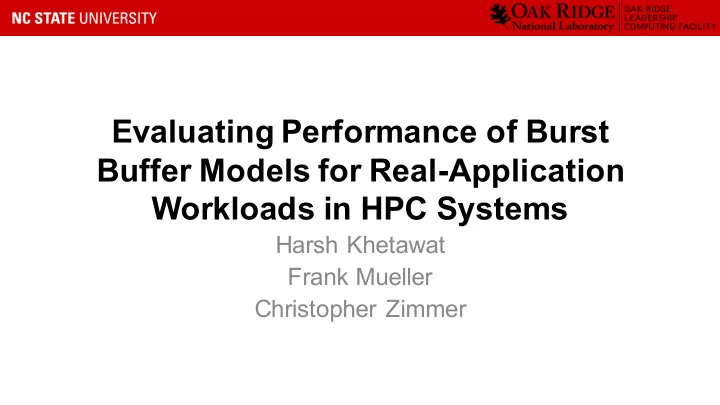

Evaluating Performance of Burst Buffer Models for Real-Application Workloads in HPC Systems Harsh Khetawat Frank Mueller Christopher Zimmer
Introduction • Existing storage systems becoming bottleneck • Solution: burst buffers • Use burst buffers for: – Checkpoint/Restart I/O – Staging – Write-through cache for Burst Buffers on Cori parallel FS
Placement • Burst buffer placement: – Co-located with compute nodes (Summit) – Co-located with I/O nodes (Cori) – Separate set of nodes • Trade-offs in choice of placements – Capability – I/O models, staging, etc. – Predictability – Impact on shared resources, runtime variability – Economic – Infrastructure reuse, cost of storage device • I/O performance dependent on placement – Choice of network topology
Idea • Simulate network and burst buffer architectures – CODES simulation suite – Real-world I/O traces (Darshan) – Full multi-tenant system with mixed workloads (capability/capacity) – Supports network topologies – Local & external storage models • Combine network topologies and storage architectures • Performance under striping/protection schemes • Reproducible tool for HPC centers
Conclusion • Determine based on workload characteristics: – Burst buffer placement – Network topology – Performance of striping across burst buffers – Overhead of resilience schemes • Reproducible tool to: – Simulate specific workloads – Determine best fit
Thank You
Recommend
More recommend